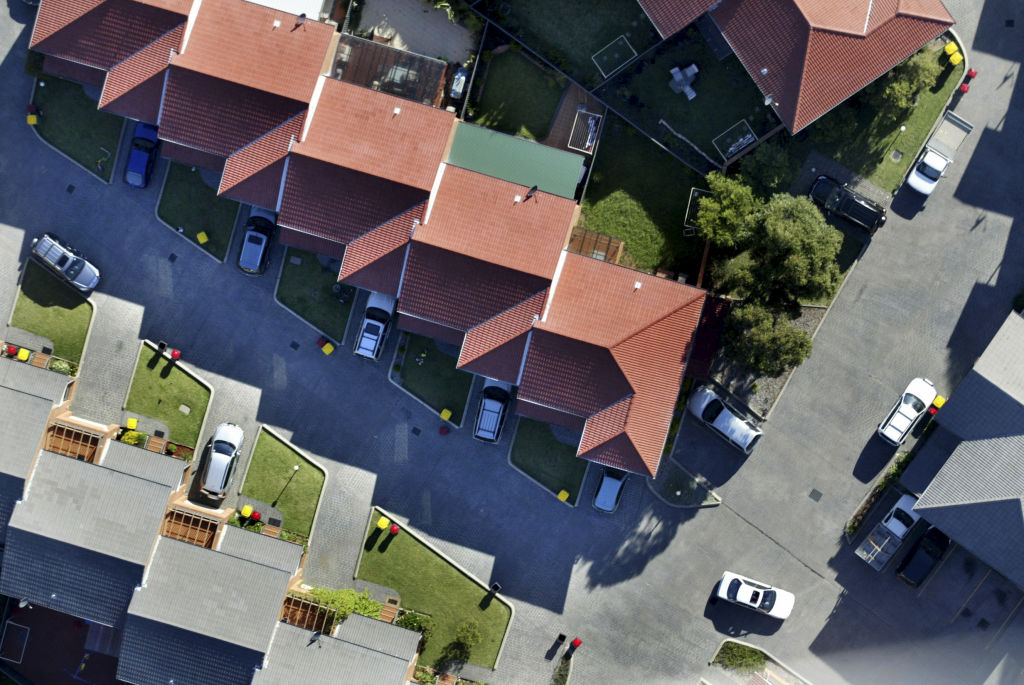Average Australian borrower in mortgage stress, Canstar analysis shows

The average Australian home owner is spending more than one-third of their income on home loan repayments, leaving them in mortgage stress, new analysis shows.
Mortgage repayments chew up 34 per cent of an average disposable household income, according to national figures compiled by financial comparison site Canstar.
Using the average variable rate and latest average house price and income data from the Australian Bureau of Statistics, Canstar compared repayments for principal and interest loans against disposable income.
Borrowers in NSW were most at risk, with repayments for the average household taking up 40 per cent of their income. Those in Victoria were only marginally better off, with repayments at 38 per cent.

In other states and territories, households put less than 30 per cent of their after-tax income — the benchmark for mortgage stress — to repayments. Those in the Northern Territory put the smallest proportion — 19 per cent — toward payments.
“What we’ve seen in NSW and Victoria [in recent years] is a runaway property market … that’s what’s driven the difference in those states compared to the rest,” said Canstar finance expert Steve Mickenbecker.
“We’ve also got people in loans now that wouldn’t have been years ago,” he added. “Banks were prepared to put owner-occupiers on interest-only loans and they’ve been prepared to have very high loan-to-value ratios … people have gone into loans more stretched than they have in the past, that’s what’s been revealed [by the royal commission].”
While the analysis is based on income data from 2015-16, the latest released by the ABS, Mr Mickenbecker said slight wage increases since then have not been enough to “save the situation in NSW and Victoria”.
With the property market in both states cooling, particularly in Sydney and Melbourne, Mr Mickenbecker said this would cause further stress for new borrowers.
“Household budgets for recent purchasers are at stress point,” he said, noting recent buyers were watching their property’s value fall while banks increased repayments with out-of-cycle rate hikes. He added new buyers also had not had time to build a buffer with advanced repayments.
Domain economist Trent Wiltshire said the headline numbers were interesting, but not as scary as they seemed.
“The figures are capturing someone who has just bought a house, and they’re always going to be the most stressed … that’s when repayments are higher,” he said.
While slow wage growth was making people increasingly concerned about living costs, Mr Wiltshire said mortgage stress was at average levels when compared to the past two decades, with borrowers taking advantage of low rates by getting ahead on repayments.
Among those with less than one month of a buffer — about a quarter of borrowers — were new buyers who hadn’t had time to make extra payments, investors who wanted to keep debt high and people on fixed-rate home loans, Mr Wiltshire noted.
While mortgage stress will impact more people as interest rates rise, Mr Wiltshire said they would only increase alongside a stronger economy, wage growth and lower unemployment.
To make sure they’re in the best position ahead of more rate rises, Mr Mickenbecker said home owners should get into a low priced loan now, and also consider fixing their interest rates while they are at near historical lows.
We recommend
We thought you might like
States
Capital Cities
Capital Cities - Rentals
Popular Areas
Allhomes
More
- © 2025, CoStar Group Inc.







